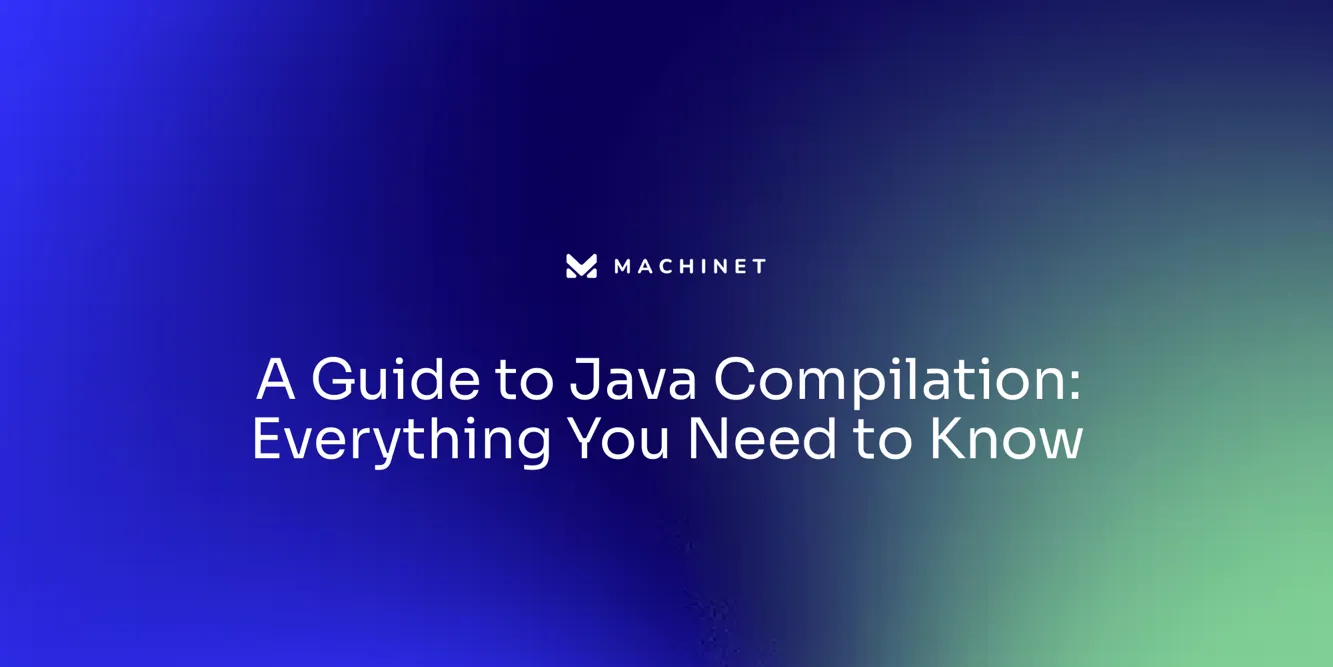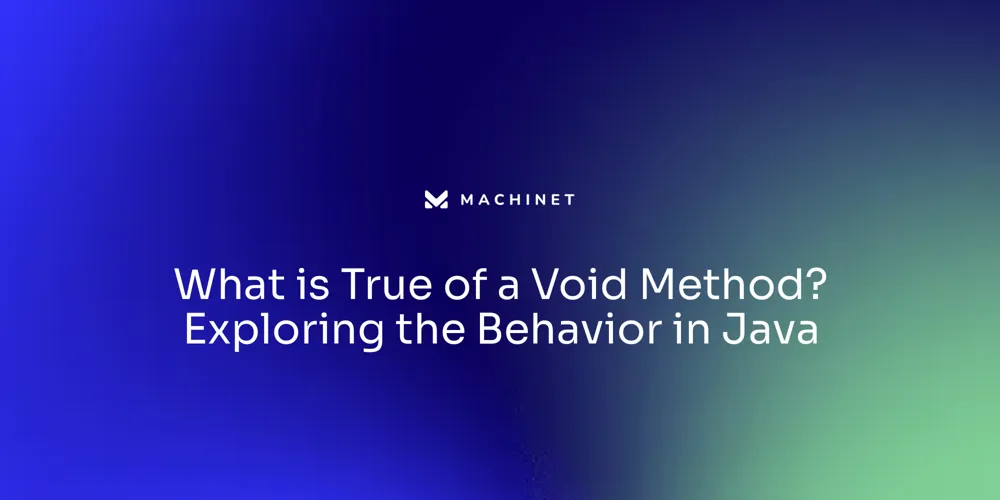
Table of Contents
- Understanding Java Compilation
- The Java Compiler
- Compiling a Java Program
- Understanding the Java Classpath
Introduction
The article "Understanding Java Compilation" provides insights into the compilation process of Java code and the role of the Java Virtual Machine (JVM). It explores how developers convert Java code into bytecode using tools like 'javac' and build tools like Maven or Gradle.
The article also highlights the advantages of Java's "write once, run anywhere" principle and discusses the evolution of Java, including changes in naming, versioning, and releases. Overall, this article offers a comprehensive understanding of Java compilation and its impact on software development.
Understanding Java Compilation
Java's compilation process serves as an essential bridge, translating human-readable Java source code into bytecode that is machine-readable. This bytecode is subsequently executed by the Java Virtual Machine or JVM. The JVM functions similarly to the main character from the movie 'Memento', who lacks short-term memory and has to constantly reconstruct his understanding of his surroundings.
Analogously, each run of the JVM, particularly during JIT compilation and warmup, starts almost from scratch, with little memory of its previous run or knowledge of other ongoing JVM operations. It's a developer's role to convert Java code into bytecode, which is achievable with 'javac' through build tools like Maven or Gradle. This bytecode can run on any platform, thanks to the JVM.
The bytecode is translated into specific native code for each supported operating system and platform. This alleviates the need for developers to write different implementations to support various platforms, as this is handled by the Java system developers. Java's promise of 'write once, run anywhere' has been a constant since its inception by James Gosling, Mike Sheridan, and Patrick Naughton in June 1991.
They envisioned a language that was portable, object-oriented, and versatile for a wide range of applications. This vision necessitated the principle of a virtual machine to ensure compactness and portability. As a result, Java developers can focus on a single code base to execute their program on any platform, be it different operating systems or hardware types.
Moreover, the evolution of Java has seen significant changes in its naming, versioning, and types of releases. JDK 10 introduced a date-driven release model, replacing the content-driven one, renaming 'Major releases' to 'Feature Releases'. This dynamic transformation continues to shape the way threads are used in Java, leading to improved efficiency and impact on scalability and streaming or messaging applications.
The Java Compiler
The Java compiler, known as 'javac', carries out the transformation of Java source code files, denoted with the extension (.java), into bytecode files, symbolized with the extension (.class). This transformation is multi-faceted, encompassing tasks such as syntax validation, type verification, and the generation of bytecode instructions. The Java Virtual Machine (JVM), akin to the protagonist of the film 'Memento', embarks on each run as if it were a fresh start, with limited memory of previous runs.
This is particularly apparent during Just-In-Time (JIT) compilation and warmup stages. The GraalVM Community Edition offers an array of platform-independent compiler optimizations. One such optimization, known as partial-escape-analysis, can eliminate the need for certain object allocations, thereby boosting application performance by reducing the frequency of heap allocations.
This optimization identifies when a newly created object is accessible outside a compilation unit and only allocates it on paths that 'escape' the compilation unit. In the software world, time flies and the compiler author, like any responsible developer, fixes issues and commits their changes. Over time, they share their philosophy regarding compiler design and semantics in a series of blog posts, thereby guiding the community of users who rely on their implementation.
Understanding the compilation process can be fascinating and complex, whether you're a seasoned developer or a novice. It helps in writing better code and appreciating the tools that make programming possible. For instance, static type checking in languages like Go is powerful.
Furthermore, 'javac' expects source files to be arranged in directory hierarchies on the file system and uses the declaration of every class or interface used, extended, or implemented by the code in the source file. The release of new versions of the Java Development Kit (JDK) and Scala 3.3.0 LTS series is exciting news. These releases introduce new features, such as the Vector API and Stream Gatherers, along with improvements in the compiler.
Users must update their compiler version to enjoy the benefits of these enhancements. In conclusion, the Java compiler plays a crucial role in software development, transforming human-readable code into machine instructions. Understanding this process can enhance your coding skills and your appreciation for the underlying tools that make it all possible.

Compiling a Java Program
An installation of the Java Development Kit (JDK) is crucial for the compilation of a Java program. To perform this task, you can follow the process by utilizing the 'javac' command for Java compilation along with the name of the Java source file.
To employ the command 'javac HelloWorld.java', java compile is used to compile a file named 'HelloWorld.java'. In the context of practical application, consider the implementation of Gradle 8.6 in the 'nowinandroid' project.
The aim was to ensure this update didn't disturb the codebase, even in a worst-case scenario where all tasks are executed without a build-cache. The experiment involved executing the task 'assembleRelease' in a clean GHA runner across 100 iterations for each variant.
In another instance, the usage of Dolt, the first version-controlled database, highlighted the potential benefits of such tools in increasing productivity during Java application development. Java 21 was chosen for its time-tested robustness and modern development capabilities, such as virtual threads, which significantly impact scalability and streaming or messaging applications.
Java's popularity and its ability to enhance performance, stability, and security is reflected in Oracle's announcement of the general availability of JDK 21, promising long-term support for at least eight years. This steady stream of improvements allows developers to manage their adoption of innovation effectively. To obtain instances of JavaCompiler.CompilationTask, you can call the method 'java compile', which uses the FileSystemProvider API to find file system providers. The usage of threads in Java is enhanced for better efficiency and scalability, creating a new dynamic through Java compilation. Java's 'statically typed language' nature refers to the necessity to define a type when declaring a new value, which can't be changed later. This, along with features like auto-compile and the 'var' keyword, makes Java easier to use for both beginners and seasoned developers.
Understanding the Java Classpath
The Java classpath serves as a directory for the Java compiler and Java Virtual Machine (JVM) to locate necessary classes and resources. Mastering its workings and setting it up correctly is vital to avoid runtime issues or compilation errors.
The classpath's efficiency can be enhanced by ensuring it contains only entries required for the application build, as unnecessary entries can lead to significant overhead in terms of reflection, slow down the build process, and increase the native binary size. The Java classpath is also instrumental in managing dependencies between different source files, enabling the Java compiler to arrange source files in one or multiple directory hierarchies.
It supports the declaration of every class or interface used, extended, or implemented by the code in the source file. With the evolution of Java versions, it has become easier to upgrade, for instance, upgrading from Java 17 to Java 21 is almost a no-operation.
With each upgrade, new features are introduced, such as virtual threads in Java 21, which further enhance the development process. However, it's important to note that while upgrading or transitioning to new versions or frameworks, like Spring Boot 3.x, challenges may arise due to changes in configurations. These changes can render most online samples and guides obsolete and require developers to adjust to the new way of doing things. In conclusion, understanding the Java classpath and how to set it correctly is crucial for efficient Java development. It helps streamline the coding process, reduces overhead, and makes the code easy to read, understand, and modify.

Conclusion
The article "Understanding Java Compilation" provides comprehensive insights into the compilation process of Java code and the role of the Java Virtual Machine (JVM). It explains how developers convert Java code into bytecode using tools like 'javac' and build tools like Maven or Gradle. The JVM functions similarly to the main character from the movie 'Memento', starting fresh with each run and translating bytecode into specific native code for different platforms.
Java's "write once, run anywhere" principle has been a constant since its inception, allowing developers to focus on a single code base that can run on any platform. The article also discusses the evolution of Java, including changes in naming, versioning, and releases, such as JDK 10's date-driven release model and the introduction of new features in JDK 21. The Java compiler, known as 'javac', plays a crucial role in transforming human-readable code into machine instructions.
Understanding this process enhances coding skills and appreciation for the underlying tools that make software development possible. The article also highlights the importance of correctly setting up the Java classpath to avoid runtime issues and compilation errors. Overall, this article provides valuable information for both seasoned developers and novices, emphasizing the significance of understanding Java compilation in writing better code and utilizing the tools effectively.
Discover how Machinet can revolutionize your coding and unit testing process today!
AI agent for developers
Boost your productivity with Mate. Easily connect your project, generate code, and debug smarter - all powered by AI.
Do you want to solve problems like this faster? Download Mate for free now.




